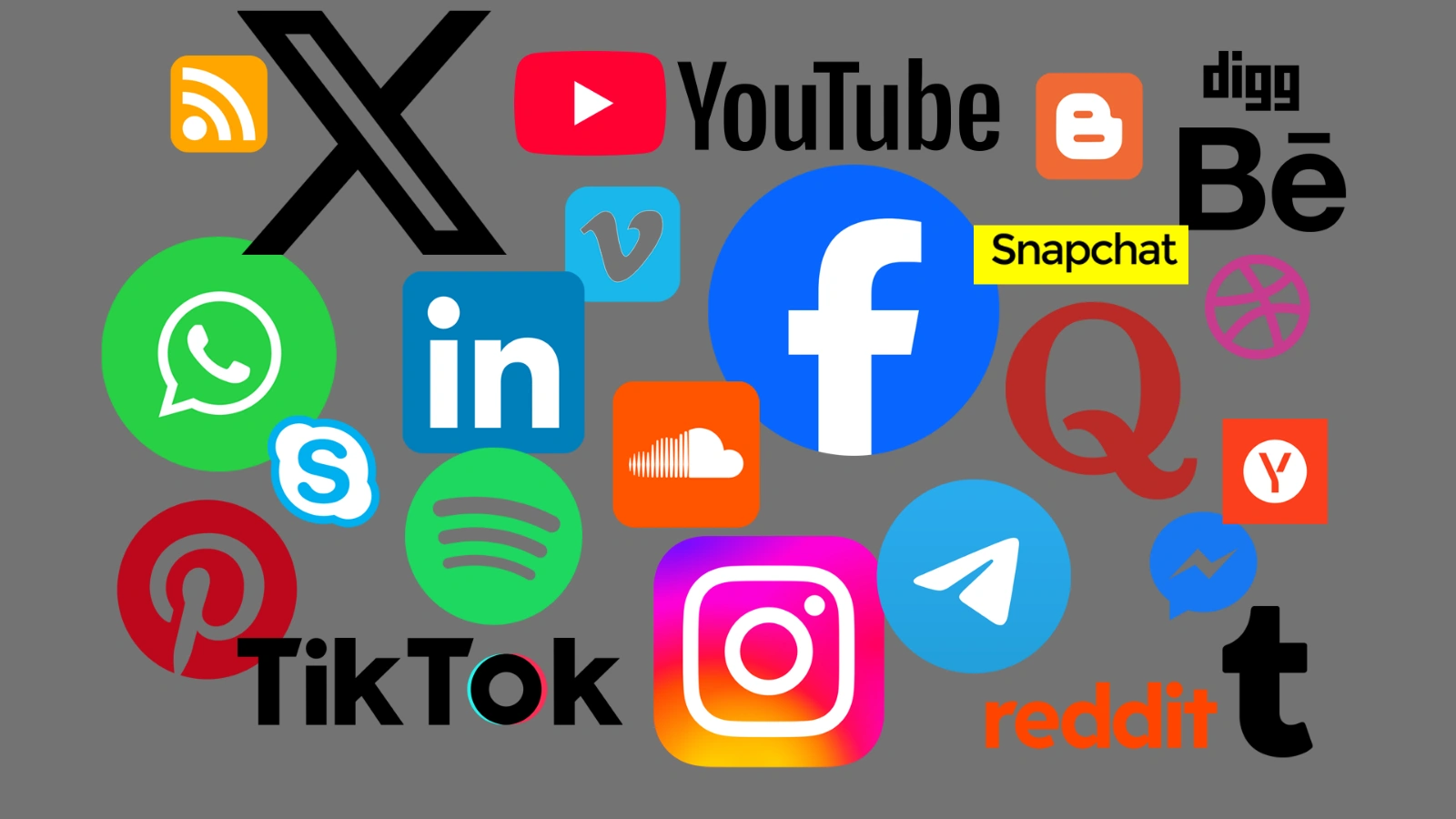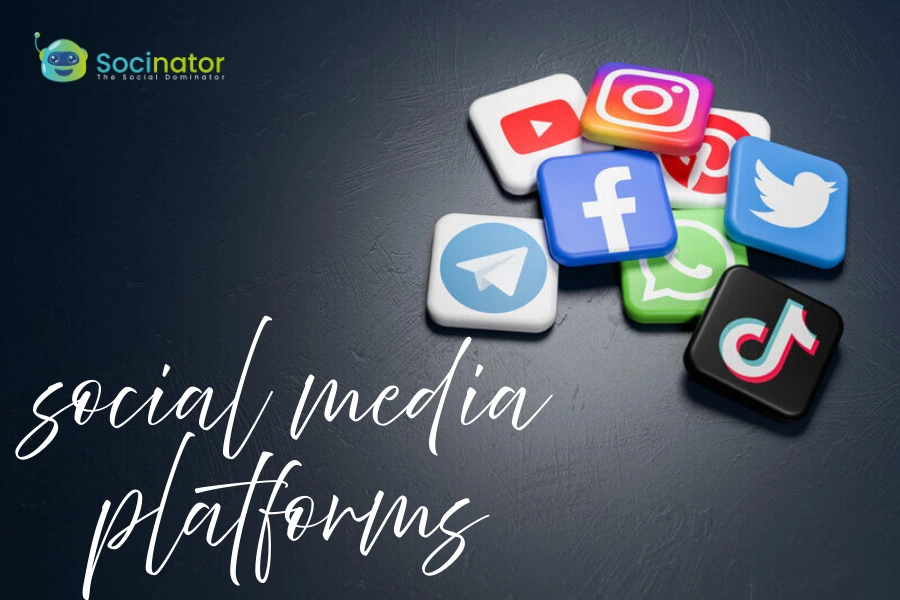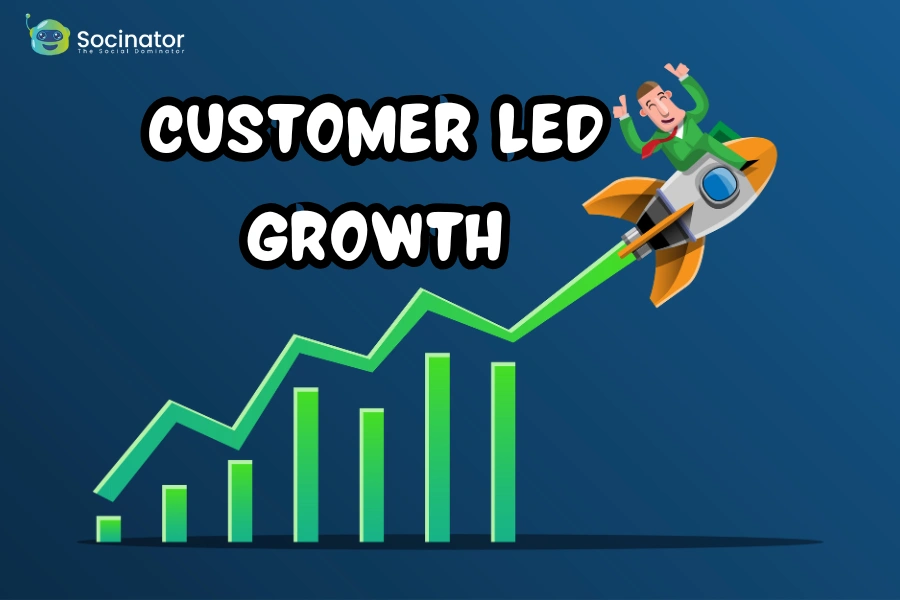What started as a simple way to stay in touch with friends has turned into something much bigger. Today, we use social media platforms to build businesses, share ideas, create content, and stay connected with what’s happening around the world. Whether you’re growing a brand or just scrolling for inspiration, they’ve become a key part of everyday life.
In 2025, things are evolving fast. New features, rising platforms, and shifting trends are changing how we connect online. This guide covers what you need to know, from what’s hot right now to which apps are shaping the future.
In a hurry? Listen to the blog instead!
Why Social Media Platforms Are Essential In 2025?
Social media platforms are the virtual spaces where communication, branding, networking, and entertainment converge. They help businesses:
- Build direct communication with their audience
Engage with customers in real time through comments, DMs, and interactive content. - Create and strengthen brand identity
Showcase brand values, voice, and visuals consistently across platforms. - Run targeted marketing campaigns
Reach specific audiences with ads, influencer collaborations, and promoted content. - Analyze user behavior and engagement
Track likes, shares, impressions, and more to refine content strategy. - Sell products via integrated eCommerce tools
Use features like Instagram Shopping or Facebook Shops to drive sales directly on the platform.
With billions of people spending hours daily on these platforms, they’ve become an essential part of modern life. For businesses and creators alike, ignoring the power of social media platform means missing out on endless opportunities.
The Evolution Of Social Media Platforms
 From the early days of MySpace and Orkut to today’s TikTok, Instagram, and Threads, social media platforms have come a long way. What started as simple digital forums has transformed into a multi-billion-dollar industry.
From the early days of MySpace and Orkut to today’s TikTok, Instagram, and Threads, social media platforms have come a long way. What started as simple digital forums has transformed into a multi-billion-dollar industry.
Here’s a brief look at the evolution:
- 2000s: Focused on basic networking (e.g., Friendster, MySpace)
- 2010s: Rise of Facebook, Twitter, and Instagram
- 2020s: Video-first content dominates, TikTok explodes, AI and personalization take over
As user expectations evolve, social media platforms constantly adapt, offering new features like Stories, Reels, monetization tools, and even augmented reality.
Key Features Driving Engagement On Social Media
To keep users engaged and returning, social media platforms combine technology, design, and behavioral psychology. At the heart of it all is social media content, which fuels interaction, trends, and community growth. Here are the top features making the biggest impact today:
Short-Form Video Content:
Bite-sized videos, especially on platforms like TikTok, Instagram Reels, and YouTube Shorts, are quick to consume and highly shareable. Their format encourages repeated viewing, viral trends, and increased user interaction.
Interactive Elements:
Tools like polls, Q&As, emoji sliders, AR filters, and quizzes make users more than just passive viewers. These elements drive engagement by encouraging responses, reactions, and real-time interaction with content.
AI-Driven Content Feeds:
Algorithms powered by artificial intelligence personalize each user’s feed based on preferences, behavior, and engagement history. This tailored experience keeps users scrolling longer and increases the chances of interaction with suggested content.
E-Commerce Integration:
Platforms like Facebook Shops, TikTok Shopping, and Instagram Checkout allow users to browse, discover, and purchase products without ever leaving the app. This seamless shopping experience turns casual browsing into direct conversions.
Cross-Platform Integration:
Many tools and platforms now allow automatic posting and content syncing across multiple social networks. This not only saves time for creators and brands but also ensures a unified presence and broader audience reach.
Also Read:
7+ Types Of Social Media Content You NEED To Post
What Are The Top Social Media Platforms In 2025?
 The digital landscape continues to evolve, but a few social media platforms consistently lead the way in user engagement, innovation, and global reach. Here’s a closer look at the top platforms to watch in 2025:
The digital landscape continues to evolve, but a few social media platforms consistently lead the way in user engagement, innovation, and global reach. Here’s a closer look at the top platforms to watch in 2025:
Instagram:
With over 2 billion monthly active users, Instagram remains a powerhouse for visual storytelling. Its blend of features, including Reels, Stories, interactive polls, and in-app shopping, makes it ideal for influencers, brands, and businesses aiming to build engagement and drive conversions. Its integration with Meta’s ad system further enhances marketing capabilities.
TikTok:
Dominating the short-form video space, TikTok continues to capture the attention of Gen Z and Millennials. It’s highly personalized algorithm promotes content virality, making it an ideal platform for trend creation, influencer marketing, and organic growth.
TikTok Shopping and live commerce features also make it a key player in social commerce.
Facebook:
As one of the oldest and most established platforms, Facebook remains vital for community building, especially among older demographics.
It excels in group-based interactions, marketplace transactions, and advanced advertising options, including lookalike audiences and custom targeting.
YouTube:
The leading platform for long-form video content, YouTube is essential for creators, educators, and brands alike. With robust monetization tools like ads, Super Chats, and channel memberships, it’s a primary space for content creators.
YouTube Shorts also helps it compete with TikTok in the short-form segment.
LinkedIn:
The premier platform for professional networking, LinkedIn serves job seekers, recruiters, and B2B marketers. In 2025, it’s not just about resumes; it’s a hub for industry insights, thought leadership, and career growth. Features like newsletters, audio events, and creator tools continue to expand their utility.
X (formerly Twitter):
Known for its real-time updates and fast-paced public conversations, X is still a go-to for news, politics, and trending discussions. While it’s changing new ownership, it remains a critical platform for media, thought leaders, and brands monitoring public sentiment.
Threads:
Meta’s answer to X, Threads, is gaining momentum in 2025 as a text-first platform with seamless Instagram integration.
It offers a less chaotic alternative for users who want focused discussions without leaving the Meta ecosystem. Early adoption by creators and brands is helping it grow steadily.
How Can You Simplify Social Media Management In 2025?
With so many platforms demanding attention, managing your online presence can quickly become overwhelming. That’s why using a social media management tool is essential for creators, marketers, and businesses looking to stay organized and consistent.
These tools allow users to:
- Schedule posts across multiple social media platforms
Plan and publish content in advance to maintain a steady online presence. - Monitor analytics and engagement
Track performance metrics to understand what’s working and what needs improvement. - Manage DMs and comments from a single dashboard
Reply to messages and connect with your audience, all in one place, without the need to switch between apps. - Collaborate with team members
Assign roles, approve content, and streamline your workflow in one place. - Track brand mentions and keywords
Stay updated on conversations around your brand to respond in real time.
For those looking for an all-in-one solution, Socinator stands out by offering a powerful and user-friendly way to manage everything in one place.
What Are The Most Popular Social Media Platforms By User Base?
 Understanding where your audience spends their time starts with knowing which platforms dominate the digital space. Here’s a current breakdown of the most popular social media platforms in 2025, based on monthly active users (MAUs):
Understanding where your audience spends their time starts with knowing which platforms dominate the digital space. Here’s a current breakdown of the most popular social media platforms in 2025, based on monthly active users (MAUs):
Facebook – 3.04 Billion MAUs:
Facebook remains the largest social media platform globally. Its strength lies in community groups, marketplace features, and advanced ad targeting, making it essential for businesses and social connections alike.
YouTube – 2.7 billion MAUs:
As the go-to platform for video content, YouTube offers everything from tutorials and entertainment to education and live streaming. With Shorts gaining traction, it now caters to both long-form and short-form audiences.
WhatsApp – 2.0 billion MAUs:
A leading messaging app globally, WhatsApp goes beyond texting with features like voice/video calls, Status updates, and WhatsApp Business for customer engagement and support.
Instagram – 2.0 billion MAUs:
Still a visual-first powerhouse, Instagram thrives with Reels, Stories, in-app shopping, and influencer collaborations. Its Meta ad ecosystem makes it highly attractive for digital marketers.
TikTok – 1.8 billion MAUs:
TikTok has become the epicenter of short-form video and trend culture. With a powerful discovery algorithm and growing eCommerce features, it’s a favorite for Gen Z and content creators.
LinkedIn – 900 million MAUs:
More than just a job board, LinkedIn is now a full-fledged professional content platform. Users share insights, join industry-specific groups, and participate in career-focused conversations.
Snapchat – 800 million MAUs:
Popular among younger users, Snapchat offers ephemeral messaging, AR filters, and Discover content. It remains strong in visual communication and private sharing.
X (formerly Twitter) – 600 million MAUs:
X is still a hub for real-time news, trending discussions, and public commentary. Despite platform changes, it holds a unique place in social media for live updates and discourse.
These figures prove that the battle for user attention is fierce, and the need to choose the right social media platforms is more crucial than ever.
How Many Social Media Platforms Are There?
As of 2025, there are over 200 active social media platforms around the world. However, only about 25 to 30 of them have large-scale global adoption. The rest serve more region-specific or niche audiences, which marketers often analyze through social media intelligence to identify hidden growth opportunities.
Here are a few examples:
WeChat (China) – A multi-purpose app combining messaging, payments, and social media, used by over a billion users.
VK (VKontakte) (Russia) – Russia’s leading social network, similar to Facebook in functionality.
Line (Japan, Taiwan, Thailand) – A messaging and social app with stickers, games, and integrated services.
Discord – Popular among gaming and tech communities for group chat and community building.
Reddit – A forum-based platform organized into topic-specific “subreddits” for open discussions.
Telegram – Known for encrypted messaging and channels, often used by privacy-focused users and communities.
Clubhouse – Audio-based platform that allows drop-in voice conversations, popular among professionals and thought leaders.
While the global giants dominate the spotlight, these niche and regional platforms play a vital role in connecting specific communities across interests and geographies.
Also Read:
Types Of Social Media Marketing You Need To Try Now
The Ultimate Guide To Social Media Intelligence
Is Social Media Automation The Key To Faster Growth?
As demands increase, automation is no longer optional. A good social media automation tool can handle repetitive tasks like posting, replying to DMs, and curating content—making it an essential part of modern social media marketing strategies.
Here’s what automation helps with:
- Consistent posting schedule
- Faster audience interaction
- Better time management
- Trend monitoring
- Performance reporting
It not only saves time but also maximizes ROI on your content efforts. Many tools now use AI to suggest post timings, hashtags, and content types.
One standout solution is Socinator, a trusted automation tool used by 5,000+ users across 100+ companies. It helps you manage, schedule, and grow across 9+ social media platforms from one simple dashboard, streamlining your entire workflow.
Why Is Socinator The Best Tool To Automate Your Social Media Platforms?
When it comes to managing multiple social media platforms efficiently, Socinator stands out as an all-in-one solution designed to simplify your workflow while maximizing results. From automation to analytics, it empowers users to grow and engage their audience effortlessly.
Here are six standout features that make Socinator a top choice:
Supports 9+ Platforms in One Dashboard:
Manage Instagram, Facebook, LinkedIn, Twitter, YouTube, Pinterest, Reddit, Quora, and Tumblr, without juggling between tools.
Advanced Automation Capabilities:
Automate likes, follows, comments, DMs, retweets, scheduling, and more—tailored uniquely for each platform.
Smart Content Scheduling & Calendar:
Easily plan, schedule, and preview posts with a visual drag-and-drop calendar to stay organized and consistent.
Built-In Analytics & Performance Tracking:
Get deep insights into post engagement, audience behavior, and campaign effectiveness to refine your strategy.
Human-Like Automation Behavior:
Adjust delay settings and interaction patterns to ensure safe, natural activity that protects your account integrity.
Affordable, Scalable Pricing Plans:
Choose from flexible plans that support up to 150 accounts, ideal for agencies, brands, and growing teams.
If you’re serious about scaling across multiple social media platforms without burning out, Socinator is the smart, secure, and scalable solution you’ve been waiting for.
The Role Of Trends In Platform Success
Social media platforms are driven by trends. Those who catch the wave early often see better engagement.
Some current trends dominating platforms:
- AI-generated content
- Micro-influencers
- Vertical video
- Authentic user-generated content
- Private communities and group messaging
Being trend-aware gives you an edge. It shows audiences that you’re not just active, but relevant.
A List Of Social Media Platforms Worth Exploring
Aside from the giants, here’s a list of social media platforms that are growing in 2025:
- BeReal – Focused on authenticity and real-time sharing
- Clubhouse – Audio-based networking and discussion
- Lemon8 – A blend of Pinterest and Instagram, gaining Gen Z traction
- Mastodon – A decentralized alternative to Twitter
- Reddit – Community-driven discussions and niche forums
Exploring these emerging platforms can help you tap into untapped audiences.
Conclusion
In 2025, social media is more than just a trend; it’s an essential tool for communication, business growth, and personal branding. From understanding which platforms dominate to leveraging automation for efficiency, staying informed and adaptable is the key to success. Whether you’re a creator, marketer, or brand, how you use these platforms can define your reach and relevance.
Ready to simplify and scale your social media strategy? Try Socinator, your all-in-one automation and management tool built to grow with you.
FAQs
1. What’s the best time to post on social media in 2025?
Ans. Optimal posting times vary by platform and audience. However, tools like Socinator and others often use AI analytics to suggest the best times based on past engagement and behavior trends.
2. How important is social media SEO in 2025?
Ans. Extremely important. Social media platforms are now searchable, and optimizing captions, hashtags, and bios with relevant keywords helps boost visibility both on-platform and in search engines.
3. Can I grow on social media without showing my face?
Ans. Yes. Many creators and brands build strong followings using voiceovers, animations, product demos, memes, and text-based content. Strategy, consistency, and value matter more than appearance.









